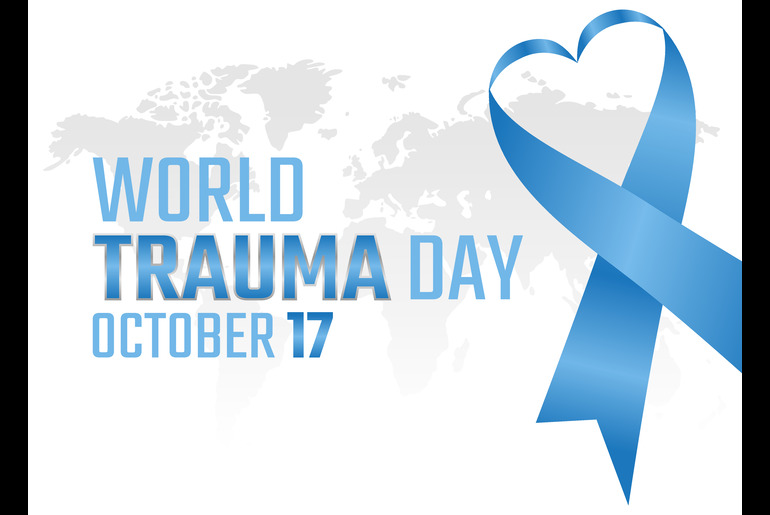Have you ever wondered what happens right after a serious accident or injury? When time is critical, how do you know what to do first? In trauma situations, acting quickly can mean the difference between life and death. The sooner a patient gets care, the better their chances of surviving and recovering. That is why the ABCs are the first steps in trauma care. These steps help focus on the most important parts of survival right away. With World Trauma Day coming up, read on and learn how these three simple steps can save lives when trauma occurs.
What are the ABCs of Trauma Care? [1]
The ABCs of trauma care refer to Airway, Breathing, and Circulation. These are the key steps in emergency medical care for trauma patients. In emergencies, healthcare professionals use this sequence to quickly check and handle life-threatening issues. Each step plays an important role:
- Airway: Ensuring that the airway is clear so the patient can breathe.
- Breathing: Check if the patient is breathing effectively and provide assistance if needed.
- Circulation: Ensuring that blood is flowing properly through the body and managing any bleeding.
The ABCs help first responders, doctors, and paramedics stabilise trauma patients and improve their chances of survival. Now, let us take a closer look at each part.
A – Airway: Ensuring an Open and Clear Airway
Importance of Airway Management
In any trauma situation, the first and most important step is making sure the airway is open. If a person cannot breathe, they will not survive, no matter how well the rest of their body is functioning. Airway blockages can happen due to facial injuries, objects blocking the airway, or the position of the person’s head. Clearing these blockages right away is crucial for survival.
Airway Management Techniques
To manage the airway, different techniques are used based on the situation. Simple methods include tilting the head back or lifting the chin to keep the airway open. In more serious cases, advanced techniques like placing a tube in the throat might be needed. Emergency responders are trained to quickly assess and fix airway problems.
B – Breathing: Assessing and Supporting Effective Breathing
Importance of Breathing Assessment
After making sure the airway is clear, the next step is to check if the patient is breathing properly. Breathing problems can happen due to injuries to the chest, lungs, or other parts of the respiratory system. If the patient isn’t breathing well, the body’s organs, especially the brain, won’t get enough oxygen, which can lead to serious complications.
Breathing Support and Interventions
If the patient isn’t breathing well, healthcare providers may need to help. This might involve giving oxygen through a mask or using artificial breathing methods like bag-mask ventilation. These techniques make sure the patient gets enough oxygen to keep their organs working properly.
Common Breathing Issues in Trauma
Some common breathing-related complications in trauma include collapsed lungs, broken ribs, and airway blockages. These can be life-threatening and need immediate attention.
Monitoring and Reassessment
Breathing needs to be checked constantly, as things can change quickly in trauma patients. Healthcare providers will keep reassessing the patient’s breathing and make adjustments if needed. This helps prevent more problems and aids in recovery.
C – Circulation: Managing Blood Flow and Addressing Bleeding
Importance of Circulation Assessment
The “C” in ABC stands for Circulation, which means making sure blood is flowing properly through the body. Trauma can cause a lot of blood loss, which can lead to a serious condition called shock. Without enough blood flow, organs and tissues will not get the oxygen and nutrients they need, which can be life-threatening.
Assessment of Circulation
To check circulation, healthcare providers assess the patient’s pulse, blood pressure, and overall blood flow. Signs of poor circulation include a weak pulse, pale skin, and confusion, which can mean that the brain and other organs aren’t getting enough blood.
Circulation Support and Interventions
To help circulation, healthcare providers may control bleeding using bandages or pressure, give intravenous (IV) fluids to keep blood pressure stable, or even perform a blood transfusion if needed. These actions are important for preventing shock and stabilising the patient.
Conclusion
Accidents can strike unexpectedly, and every second counts when saving a life. On this World Trauma Day, understand and spread awareness of the ABCs of trauma care and contribute to a safer and more prepared community.
Reference Links:
https://www.mayoclinic.org/medical-professionals/trauma/news/managing-penetrating-trauma/mac-20518677
https://www.narayanahealth.org/blog/abcs-of-trauma-resuscitation-airway-breathing-and-circulation
https://medlineplus.gov/ency/article/000007.htm
https://www.ncbi.nlm.nih.gov/pmc/articles/PMC4068090/
https://www.ncbi.nlm.nih.gov/pmc/articles/PMC7296362/
https://www.ncbi.nlm.nih.gov/books/NBK547757/





Comments are closed.